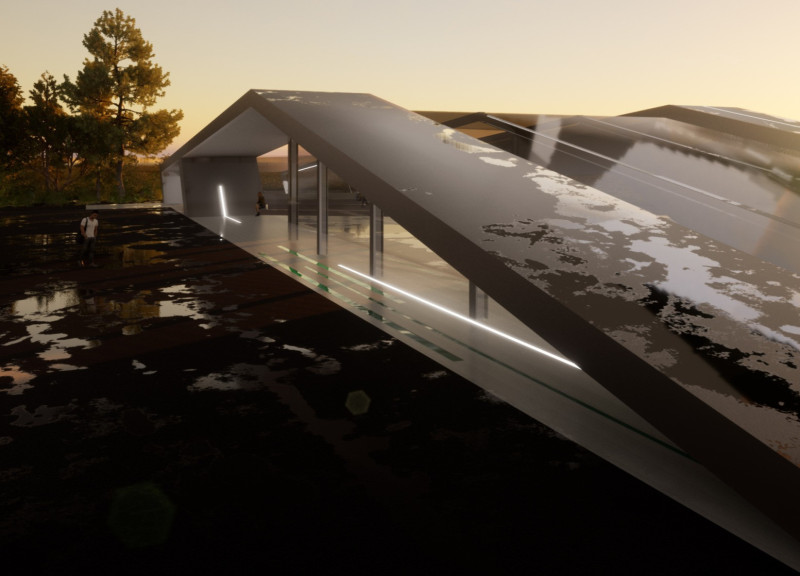5 key facts about this project
The Energy Blade visitor center is located in a unique volcanic landscape, designed to serve as an interactive space for visitors and to promote ecological awareness. The overall concept centers on sustainability, aiming to reduce environmental impact through various innovative methods. This center intends to provide an engaging experience that highlights the geological features of the surrounding area.
Design Concept
The design focuses on using prefabricated systems that streamline both construction and ongoing operation. The use of recycled steel helps lower the carbon footprint associated with traditional building processes. Such choices reflect a commitment to sustainability, allowing for a thoughtful life cycle approach that is in line with modern architectural practices.
Spatial Organization
The ground floor layout enhances visitor experience by including distinct areas such as exhibition rooms, a hall, and key amenities like restrooms and an automatic bar. This careful arrangement promotes accessibility and encourages exploration, making it easy for visitors to enjoy the various offerings. A well-planned flow of spaces ensures comfortable navigation and meaningful engagement with the educational content and the natural environment.
Technical Integration
The design incorporates essential technical systems that support its sustainability goals. A geothermal system helps optimize heating and cooling, making use of the natural geothermal energy prevalent in the volcanic region. Solar panels are also strategically placed to capture sunlight and further reduce reliance on non-renewable energy sources. Additionally, tree planting initiatives promote biodiversity in the area, contributing to a balanced ecosystem that benefits both the building and its surroundings.
Architectural Form
The visitor center features a form that echoes the volcanic landscape, creating a visual connection with the environment. This choice allows for the maximization of natural light and air flow inside the building, enhancing the visitor experience while exploring the exhibits. The relationship between the architecture and nature highlights a commitment to harmonizing the built environment with the surrounding ecosystem, inviting visitors to connect with the volcanic setting.






















































